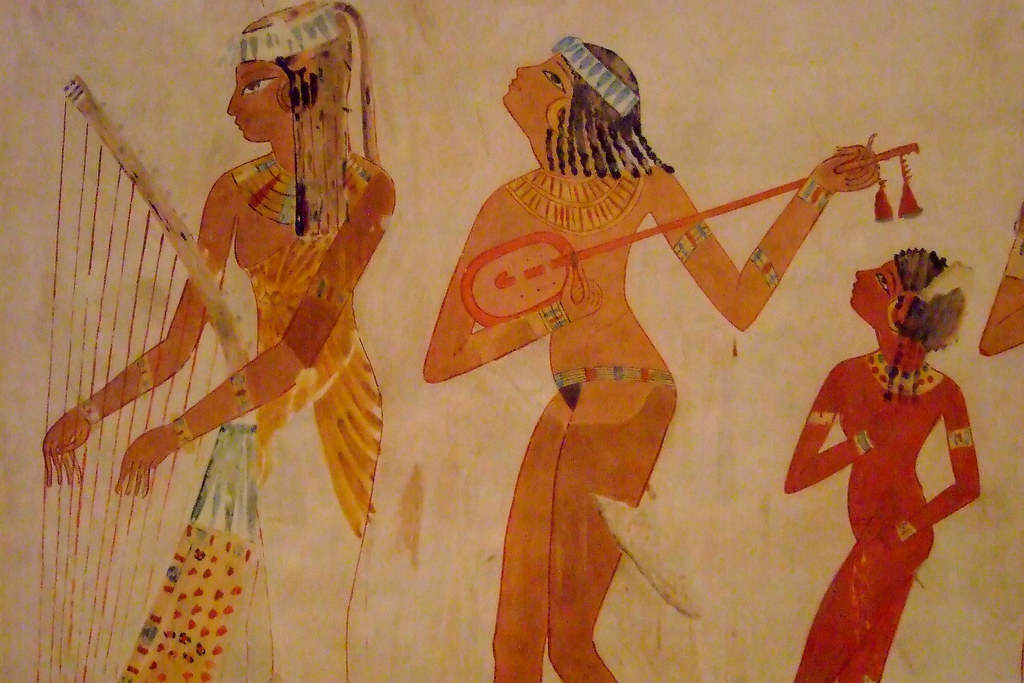 Ancient Egyptian Clothes: the ancient Egyptians, both men and women, wore linen clothing to cope with the hot weather. Men donned short skirts called kilts, while women wore form-fitting dresses with shoulder straps. Wealthy men sported pleated kilts, and older men wore longer ones. For labor, men wore loincloths and women wore short skirts. Children typically went naked during the summer months.
Ancient Egyptian Clothes: the ancient Egyptians, both men and women, wore linen clothing to cope with the hot weather. Men donned short skirts called kilts, while women wore form-fitting dresses with shoulder straps. Wealthy men sported pleated kilts, and older men wore longer ones. For labor, men wore loincloths and women wore short skirts. Children typically went naked during the summer months.
Ancient Egyptian Clothes and LINEN PRODUCTION
Linen is a fabric made from plant fibers, derived from flax plants which grew abundantly along the banks of the Nile Egypt's Mysteries - What do we mean for Egypt's Mysteries? Egypt is undoubtedly the most populous Arab nation in Africa. It is located in the desert and is divided into two parts from south to north by the Nile, the largest river in the world. The presence of the Nile greatly influences the climate in Egypt. The unique… . Flax plants have small leaves, blue flowers, and stems about two feet tall. Flax was primarily harvested by men, who pulled the plants from the ground rather than cutting them. Half-ripe flax stems provided the best thread, while overripe stems were used for mats and rope. Flax stems were soaked for several days before the fibers were separated, then beaten until soft. The resulting fibers were spun into thread, which was woven into linen fabric for clothing. Linen garments were ideal for the hot and sometimes humid Egyptian climate due to their light, airy, and flexible qualities.
In Ancient Egypt, women were mainly responsible for ancient egyptian clothes (textile production and garment making). This was a household activity, but women also worked for aristocrats in spinning and weaving shops. Garments, from the decorative outfits of queens and the intricate, pleated kilts of pharaohs to the simpler kilts and aprons of commoners, were handmade by women.
Tools used in garment making included knives and needles, which had to be molded, shaped, or carved. During predynastic times, knives were made of stone and needles were made of bone. However, in the Old Kingdom, both were made of copper, which was later replaced by bronze in the Middle Kingdom. Knives and needles were molded, and interestingly, needle eyes were not bored but were instead “scratched out with a hard, pointed instrument, probably a stone.” With these tools and linen, garments were tailored to suit the climate and social status of the people.
Men, from tomb workers to pharaohs, wore a type of kilt or apron that varied in length over time. These were tied at the front, folded at the side, or had two knots at the hips. Sleeved, shirt-like garments also became popular. Men were always clean-shaven, using bronze razors to shave their beards and heads. Women wore straight, ankle-length dresses with straps that tied at the neck or behind the shoulders. Some outfits had short sleeves, or women wore short robes tied over their shoulders. Later fashions featured many small vertical pleats and fringes on the edges.
Wealthy individuals, both men and women, wore long, pleated see-through robes. Noblemen sometimes wore a long robe over their kilt, while women donned long pleated dresses with a shawl. Some kings and queens wore decorative ceremonial clothing with feathers. The affluent wore leather sandals with straps over the instep and between the first and second toes. Many people went barefoot but wore sandals for special occasions. Kings wore elaborately decorated footwear and occasionally decorative gloves. Shoes were made of palm fiber, braided papyrus, or leather.
Clothing styles were chosen for comfort in Egypt’s hot, dry climate, with wraps and cloaks worn during colder weather. Women did not dress without bathing first (the wealthy had tiled areas for washing). After washing, they applied scented oil to their bodies and draped a large linen rectangle over their heads, gathering the corners and tying them in a knot below the chest. Typical toiletries included tweezers, razors, and combs. Priests bathed multiple times daily and had to remove all body hair to approach the gods.
Manuel Marino is a seasoned Senior Producer, Music Composer, and Artist with over a decade of experience. He specializes in branded entertainment across various mediums, including video games, films, and advertising campaigns. With 20+ years as a game music composer, Manuel has worked on numerous platforms, creating diverse orchestral soundtracks. HIRE ME


 Manuel is a passionate, driven, and techsavvy AV technician,
Manuel is a passionate, driven, and techsavvy AV technician, 
